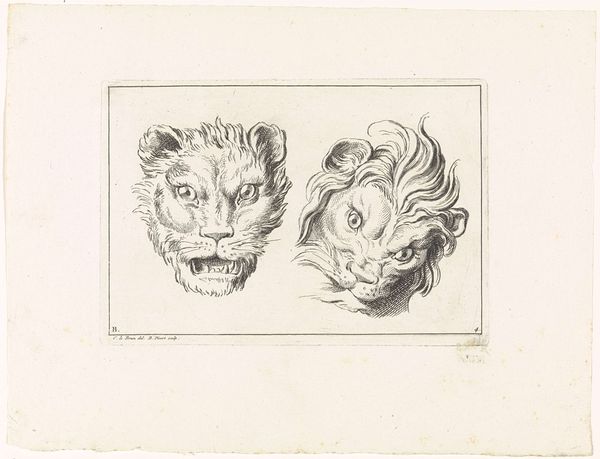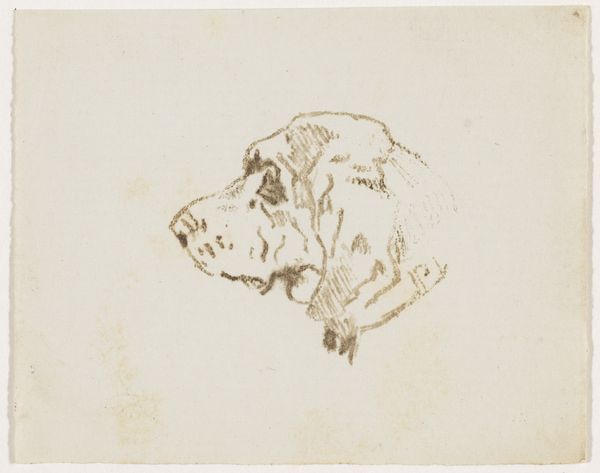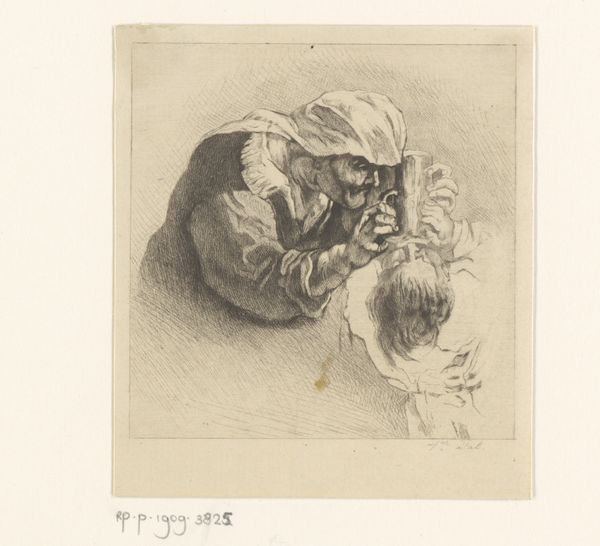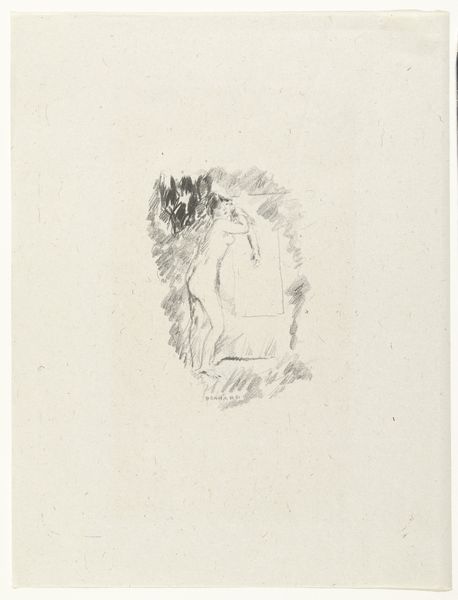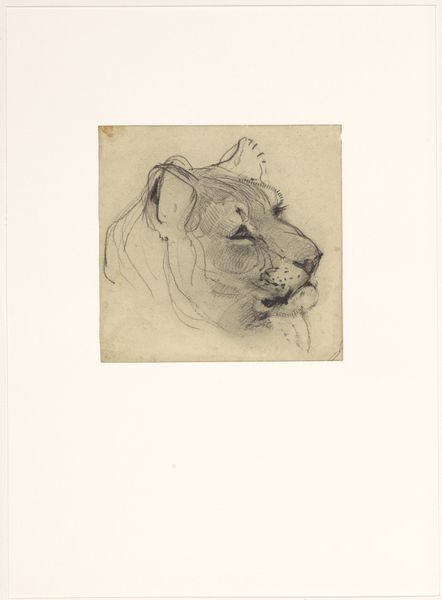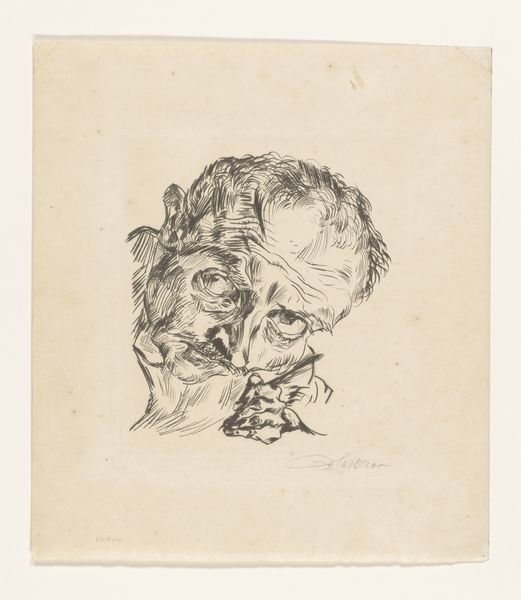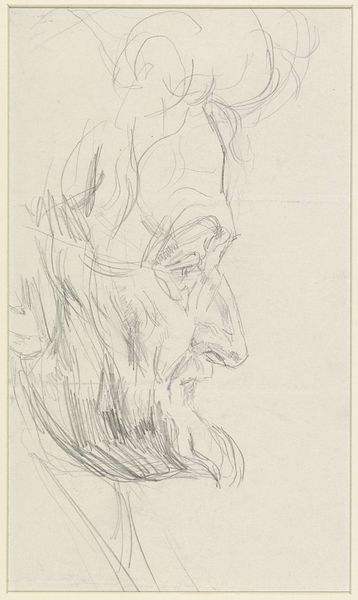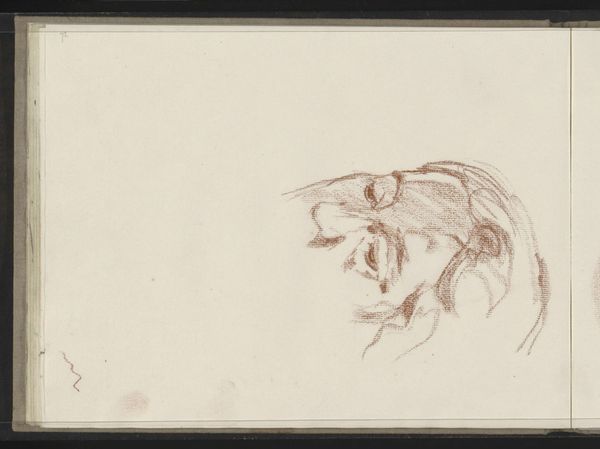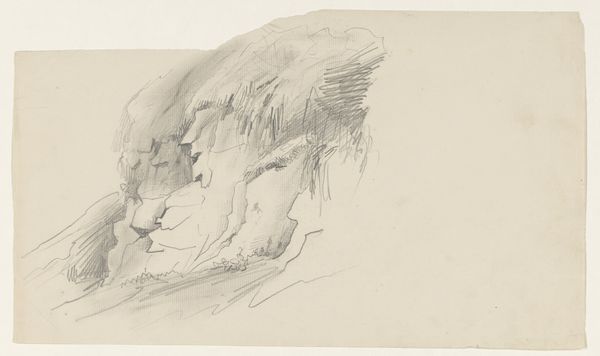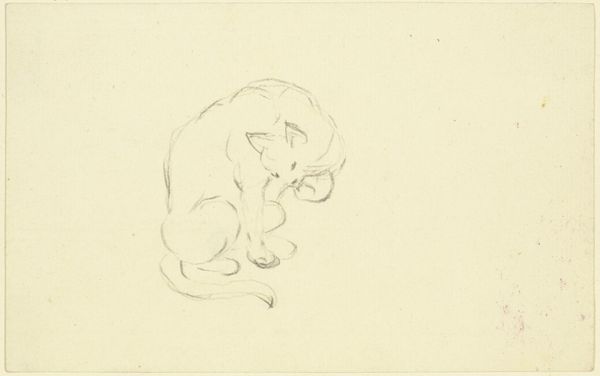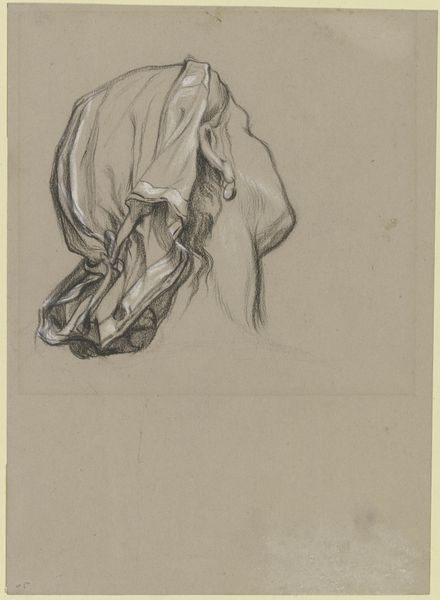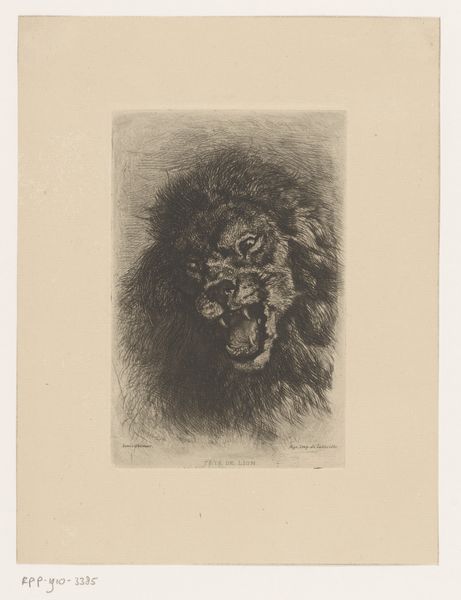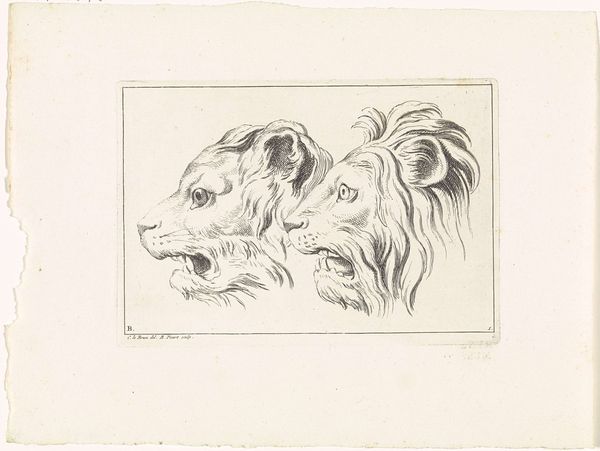
drawing, pencil
#
portrait
#
drawing
#
pencil sketch
#
romanticism
#
pencil
#
horse
Dimensions: height 97 mm, width 105 mm
Copyright: Rijks Museum: Open Domain
Curator: This drawing presents a rather wistful image, wouldn’t you agree? A gentle, almost melancholic study. Editor: Yes, there's a definite air of introspection. The stark simplicity focuses my attention on the delicate pencil work. Before us, we have Pieter Barbiers' "Head of Horse with Reins" dating from 1808 to 1848 here in the Rijksmuseum. The use of such direct materials evokes an intimate sense of the work. Curator: Indeed, and it’s intriguing how the softness of the pencil almost romanticizes the animal, which when contextualized within Dutch Romanticism could provide social insight into the commodification of horses during this time, from their role as work animals to the rising popularity in equestrian sport. Editor: What stands out to me is the skillful way Barbiers conveys form and texture with such economy. Look at the subtle gradations that describe the musculature and the mane, for instance. There's a refined structural logic at work. Also, the implied volume through these very delicate means! Curator: A pertinent point that raises questions concerning art versus labor in drawing during this era: these pencil lines, of course, denote shape and structure, but what is it that makes them art? Editor: The very choice of the subject is crucial. A horse, particularly in this period, can be interpreted as a potent signifier of status and a very romantic representation. Curator: Absolutely, but the horse’s symbolic function as it pertains to artistic agency might also extend into the artist's class, no? Paper as the object of work but also as a statement regarding the artist's role. Editor: I concede to your insight; but how can we move to resolve the binary we've thus constructed? Can we explore its unique composition outside this conflict of high/low art? How the play of light and shadow across the horse’s face contributes to its pensive mood. The negative space too serves to emphasize the curve of the neck. Curator: These small pencil drawings tell us a story. About the rise of certain types of recreation among specific communities. A narrative constructed by what the horse actually represented beyond solely its aesthetic form, both as tool, symbol, and, for Barbiers, likely also income. Editor: It’s fascinating how even within what might seem like a straightforward portrait, multiple interpretive threads can emerge, challenging our presumptions about intent, skill, or meaning. Curator: Yes, thinking about its context as well makes me realize it is never a neutral portrayal. Everything that’s around it—from Barbiers’ personal life to the broader social landscape. Editor: Leaving us perhaps with more questions than answers about seeing or drawing.
Comments
No comments
Be the first to comment and join the conversation on the ultimate creative platform.

